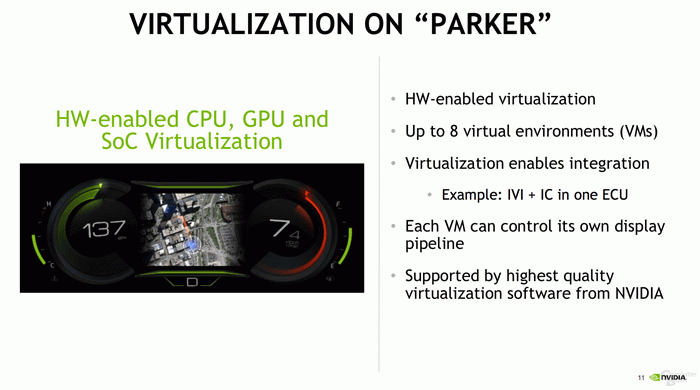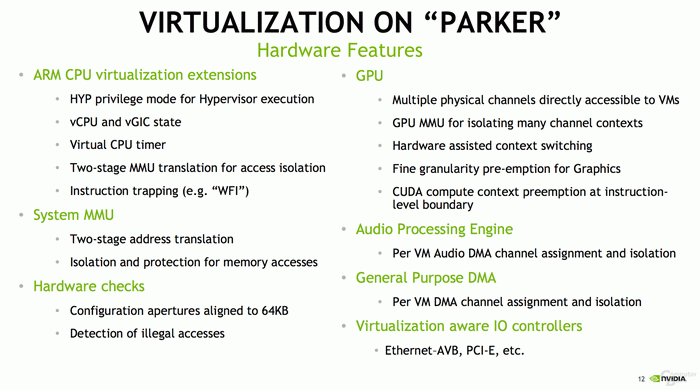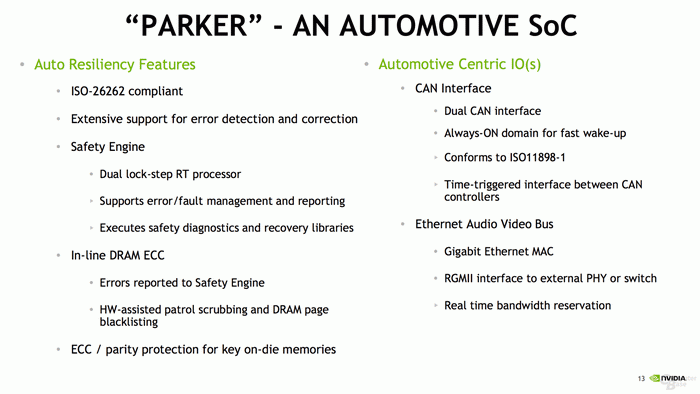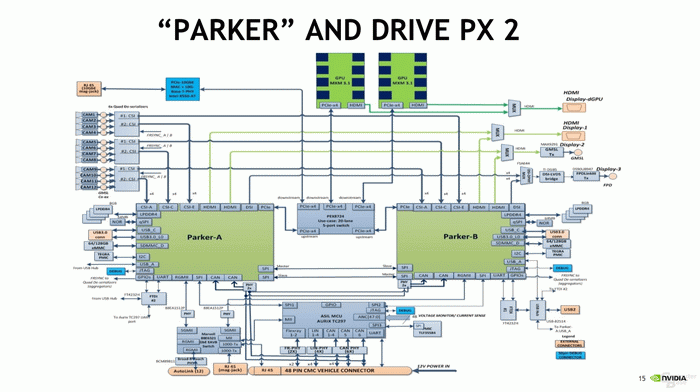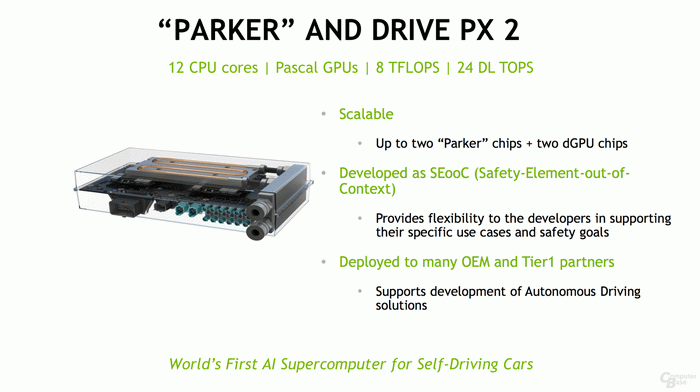
Tegra Parker was used in the Drive PX 2 vehicle computer announced earlier this year.
At the just-concluded Hot Chips conference, NVIDIA released a new generation of its own Tegra processor, Parker. In fact, as early as the beginning of this year, Tegra Parker was used in the Drive PX 2 in-vehicle computer, and it was known as the world’s first smart supercomputer in self-driving cars. At the time of the release of the Drive PX 2, Lao Huang stated that it used the latest generation Tegra processor, but did not announce more details about it at that time.
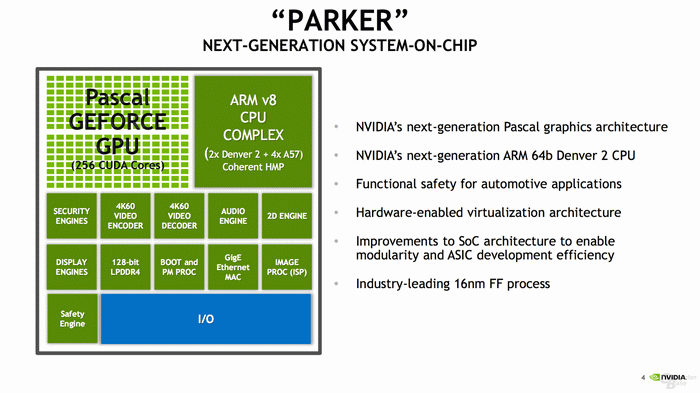

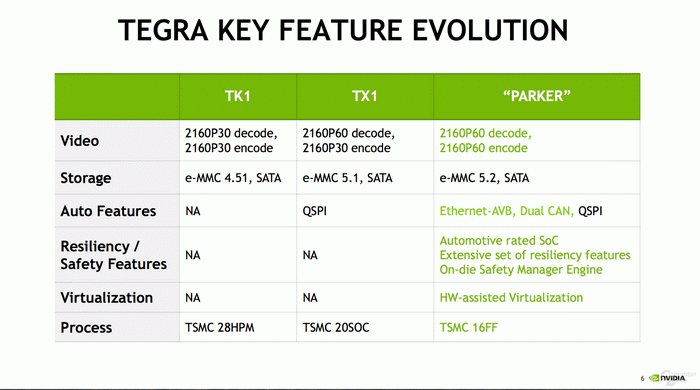
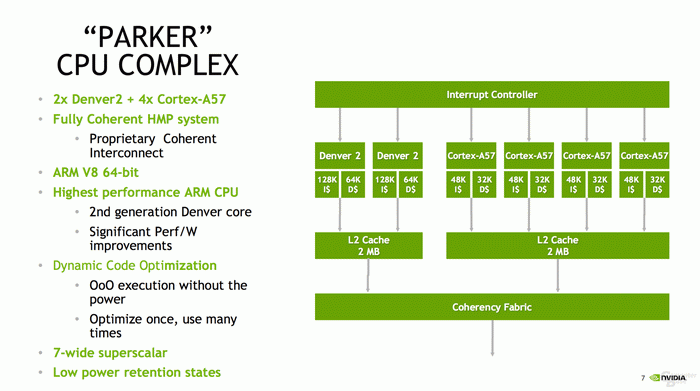
At the Hot Chips conference, NVIDIA officials stated that as a new generation of Tegra processors, Tegra Parker is a processor for smart driving. It is very suitable for on-board computer systems in smart cars.
Parametric configuration, Parker's CPU part is 2 * Denver 2.0 + 4 * Cortex-A57, the official description of the CPU part: Parker's Denver core is version 2.0, 64-bit ARMv8 architecture, 7-Way superscalar architecture, while optimized The dynamic decoding algorithm, which adds extra low power consumption and retains state for energy savings, Denver 2.0 and Cortex-A57 cores are interconnected via the same L2 cache.
On the GPU side, Tegra Parker uses the Pascal architecture currently used by NVIDIA on the GTX 10 series, with 256 CUDA cores. Although its CUDA core number does not change, on the Pascal architecture, CUDA is more efficient and the GPU frequency is also higher. Can be done higher, we can understand that the performance of the GPU is still a great improvement. NVIDIA said that Parker's GPUs can provide powerful performance support for unmanned and deep-learning complex calculations. It can drive multiple high-resolution display devices at the same time. This can be used in dashboards and map navigation in smart cars. Car dashboard, and so on.
Tegra Parker has powerful scalability, it supports virtualized hardware, can support 8 virtual machines, and is used in several automotive systems in smart cars, such as car entertainment systems, dashboard systems, autopilot systems, etc., requiring only one Tegra Parker can finish it. In addition, NVIDIA said that if you think that the performance of a Tegra Parker can not meet you, then you can integrate it into more complex designs, such as using two Tegra Parker NVIDIA Drive Px 2, and a number of Pascal architecture GPU.
In other respects, Tegra Parker supports 12 real-time HDR cameras working at the same time (which is extremely important for unmanned vehicles), uses 128bit LPDDR4 memory, and has a memory bandwidth of up to 50GB/s (Shaolong 820 has a 29GB/s bandwidth). Parker supports 4K 60Hz video decoding/encoding, adding some smart car related performance (driverless, security, etc.) compared to previous generation X1.
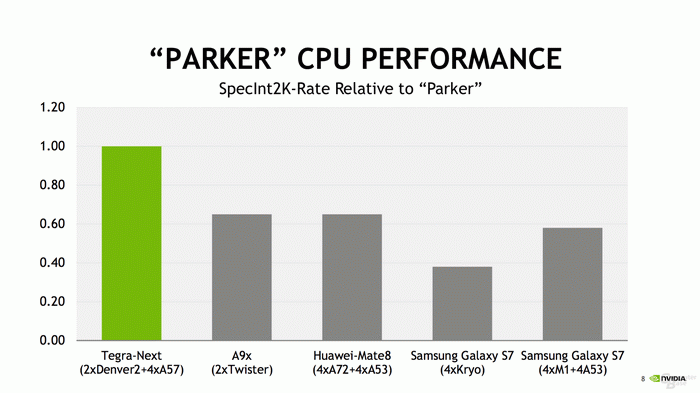
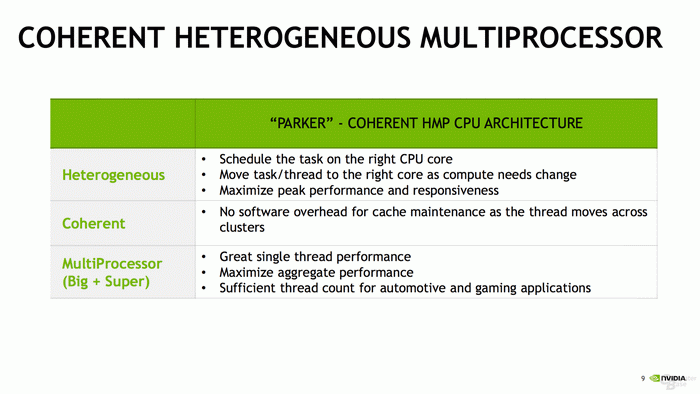
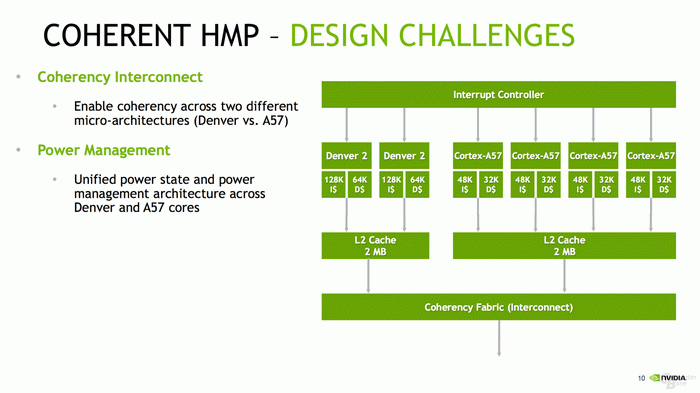
Although the Tegra processor is farther and farther away from the average consumer, PPT still compared it with the latest Samsung Exynos 8890, Qualcomm Snapdragon 820, Apple A9x, and other powerful SoCs. Why not compare GPUs? It may be NVIDIA leading too much, so there is no need for comparison ~~
Of course, we know that Tegra is not a SoC for the mobile market. It is aimed at enterprise-level users and companies. NVIDIA hopes it can become a leader in smart cars and automotive intelligent systems. It is precisely because of this that Tegra's power consumption is naturally not comparable to mobile-grade SoCs.
It is known that Volvo will be the first car manufacturer to deploy the NVIDIA Drive PX 2 vehicle AI supercomputer in support of its next year's automated drive project Drive Me. There will be 100 publicly piloted XC90 SUVs with the Drive PX 2 on the road in Gothenburg, Sweden.
